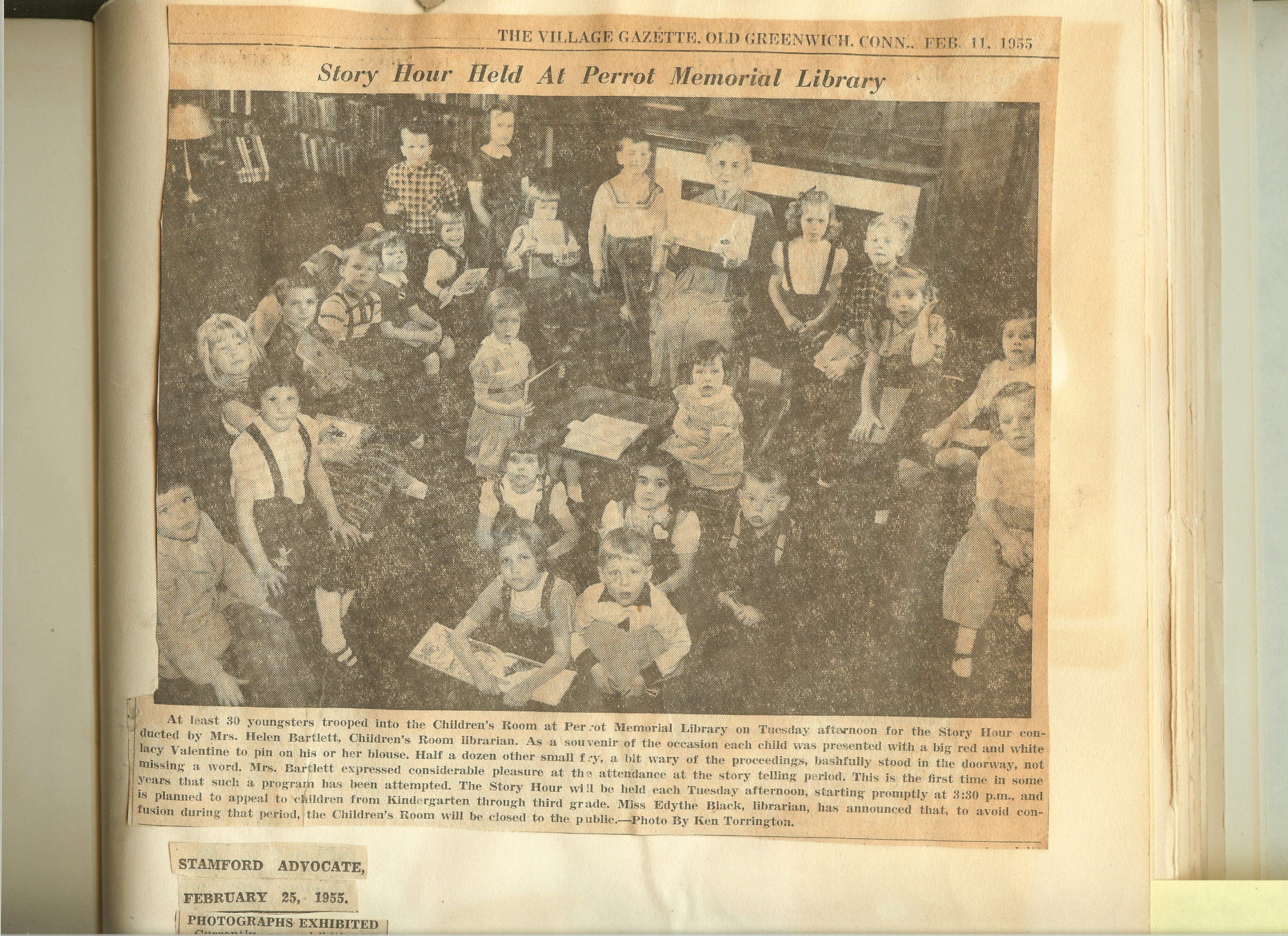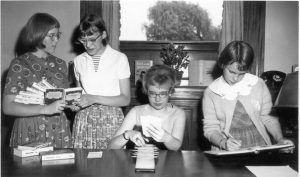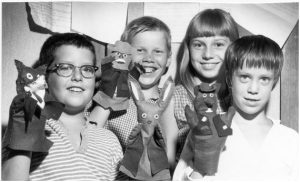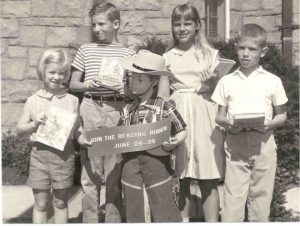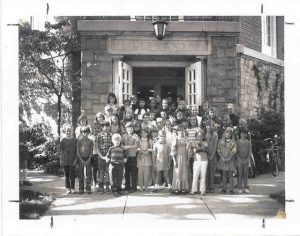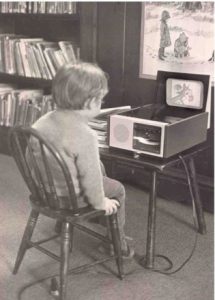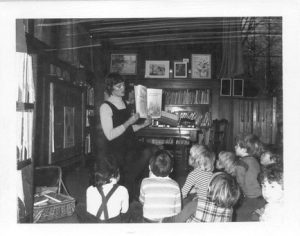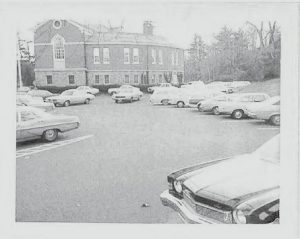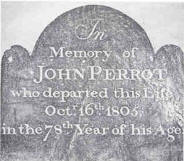
Have you ever wondered who Perrot Library was named after?
The “Memorial” in “Perrot Memorial Library” means that it was named after someone: that the library was started in someone’s honor. That someone was John Perrot. John Perrot came to America from London, England in the early 1700’s. In 1766, he started the very first school in Old Greenwich. During the Revolutionary War (when America fought to be free from England’s rule), Perrot remained loyal to the British. Perrot died in 1805 at 78 (which was very old for those days!)
You can see who else is buried in Old Sound Beach (Tomac Avenue) Cemetery at this website. You can also visit the cemetery yourself, and take pictures if you find the old gravestones interesting. Don’t make grave rubbings– you can damage the delicate old stones
Find out more about what Greenwich was like during John Perrot’s lifetime. Look in the 974.6 section for books on Connecticut’s history, and the 974.69 section for books on Greenwich’s history.
The Library Starts Out
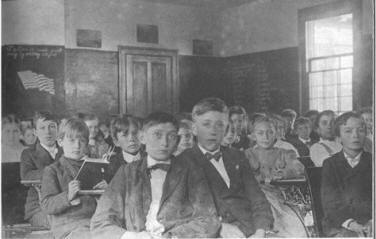
In 1904, John Perrot’s great-granddaughter, Annie de Camp Porter (you can see a bust of Ms. Porter across from the Reference Desk), decided to set aside a thousand dollars to start a library named after Perrot. Ms. Porter got together some people to work on this project with her. They didn’t have enough money to build a library, but in 1905 they found an empty room in Sound Beach School to use. They also found a librarian, named Marian Scofield. Guess how much they paid her a week? One dollar! That wasn’t very much money, even then. The picture below is a postcard of Greenwich Avenue in 1905. Did you know that there used to be a trolley line running down the street? (You can see it on the left side of the picture.) People also got around in horse-drawn carriages.
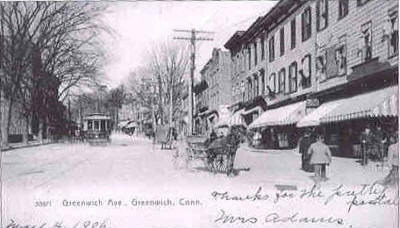
How did people find books at Perrot in 1905? The library was so small they didn’t even have a card catalog (a method for listing a libary’s books, where each book had its own index card on file)– they could list every single book they had in a tiny little booklet! It was printed in 1905. It says the library is in “Sound Beach, Conn.” because this area used to be called Sound Beach, instead of Old Greenwich. I bet you’ve heard of some of the books on the list, like Alice in Wonderland and The Jungle Book. The library had a lot of books of fairy tales, and books about travel and life in other countries.
Changes for the Library
In 1909, Sound Beach School (which still housed the one-room Perrot Library) had to be fumigated (disinfected with chemicals) after an outbreak of scarlet fever and measles. The library moved to a building on Sound Beach Avenue (the second building south of the railroad tracks on the east side of downtown Sound Beach Avenue– got all that?), in 1916. They had to fit all the books into a 20 foot by 40 foot room!
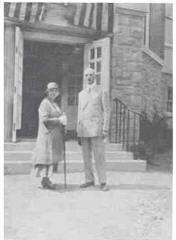
By 1928, the library had accumulated a collection of over 10,000 books. It began to seem like Perrot would never have its own building, until Annie May Hegeman, John Perrot’s great-great-granddaughter, gave the library $10,000– that is the equivalent of over $140,000 today! The picture on the left shows Annie May Hegeman with D. Everett Waid. You’ll find out who he is in the next section!
Scarlet fever used to be a very scary disease. Kids who got it developed a high fever and a rash. Before there were antibiotics, it killed many children. Did you know that The Velveteen Rabbit is about a little boy who has scarlet fever?
The Library Is Built!
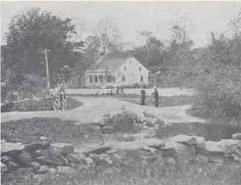
In 1930, a man named D. Everett Waid, who was an architect, gave the Perrot Library a large piece of land off of Sound Beach Avenue. The picture on the left is from 1900. The view is from where Binney Park is today. The little house is located where the library now stands! Mr. Waid also offered to design a plan for the library’s building for free. In exchange, Mr. Waid asked that a special children’s room be created in memory of his wife, Eva Clark Waid. The library was built in the Jeffersonian style (as in, Thomas Jefferson)– Mr. Waid was inspired by Monticello, which was Thomas Jefferson’s home. (Check out Monticello’s website, and see if the building reminds you of Perrot.) Today’s Perrot Library finally opened in 1931.
The Waid Room now holds grown-up books, but there is still an inscription dedicating the room to Mrs. Waid. Why don’t you look and see if you can find the dedication? The adult half of the library is also referred to as the Waid Building.
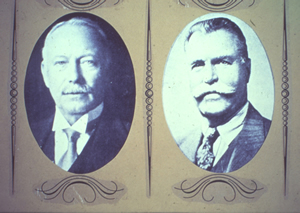
You may have noticed that across the hall from the Waid Room is the Binney Room. The room was named in honor of Edwin Binney by his wife, Alice. Mr. Binney, and his cousin, C. Harold Smith (that’s them on the right). Mr. Binney and Mr. Smith invented something really, really famous in 1903– Crayola crayons! In fact, Alice was the one who came up with the name “Crayola” by combining two words, craie (French for “chalk”), and oleaginous (meaning “oily”). The Binneys lived in Greenwich, and they also donated money in the 1920’s to create Binney Park (you can see in the picture above that the land was just a big field). You can see portraits of Mr. and Mrs. Binney in the Binney Room. Alice and Edwin Binney are buried at the First Congregational Church of Greenwich, right up the street from Perrot on Sound Beach Avenue. You can find out more about the history of Crayola crayons here– or check out great picture book biography of Edwin Binney!
Edythe Black

That’s Mrs. Black on the left. She was one of Perrot’s first librarians. She worked here for twenty-eight years! You can read more about her in The Perrot Memorial Library, An Oral History. The book is an interview with Mrs. Black about the library and how it changed over the years that she worked here (1929-1957).
In her interview, Mrs. Black tells lots of interesting stories about Perrot. When the library was still in the Maher Building on Sound Beach Avenue, she asked one of the men on the library’s board if they could get a telephone for the library. He said, “Oh no, I don’t think that’s a good idea.” Mrs. Black asked him why, and he said “You’d be bothered too much by it. It’d take up too much of your time.” Isn’t that funny? (They did get a telephone, eventually.) The book also contains a detailed timeline of the library’s early history, and more historical pictures.
Perrot Through the Years
Below are some fun historical photos of kids at Perrot during the 1960’s and 1970’s. Click on each image with your mouse to read a description.
So What About the Youth Services Wing?
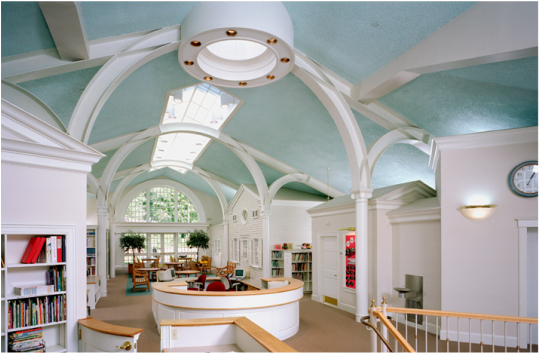
Where did it come from? Well, you remember the Waid Room, right? All the library’s children’s books used to be squeezed in there. The library decided to build a special wing just to hold the children’s books. They got started with the help of a very generous donation from the Radcliffe family, who the new addition is named after.
The library hired an architect named Mark B. Thompson to design the new wing of the library. This was a tough job. The new section had to match the old part of the library in style, and there was also a huge piece of rock that was in the way of the expansion. Mr. Thompson had to create the Youth Services Department on the second floor instead of on the ground floor order to avoid the big chunk of rock. This is why you have to walk upstairs to get to Youth Services. Part of the building is actually set into the rock. The Youth Services wing officially opened in 1998. It added 70% more space to the library! The inside of Youth Services is supposed to look like a village green lined with trees, and the program rooms are designed to look like houses. The statue in the garden is of Peter Pan. It is an exact copy of the statue that used to sit in the lobby of the Paramount Theater in Times Square (the original statue is now located in Carl Schurz Park in Manhattan). It was a gift from D. Dodge Thompson, who worked for the National Gallery and was Bradbury Thompson’s brother.
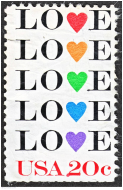
Mark B. Thompson, the architect of the Children’s Library, is the son of renowned graphic designer Bradbury Thompson. Bradbury Thompson was an art director at Mademoiselle and taught design at Yale University. He also designed more than 90 stamps for the U.S. Postal Service, including the famous “Love” stamp, pictured on the left.
Perrot celebrated its official centennial on October 1, 2005. We hope you enjoyed learning a little bit about the history of your favorite library!

